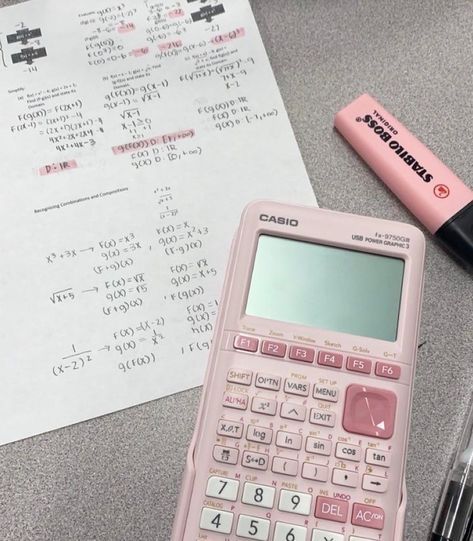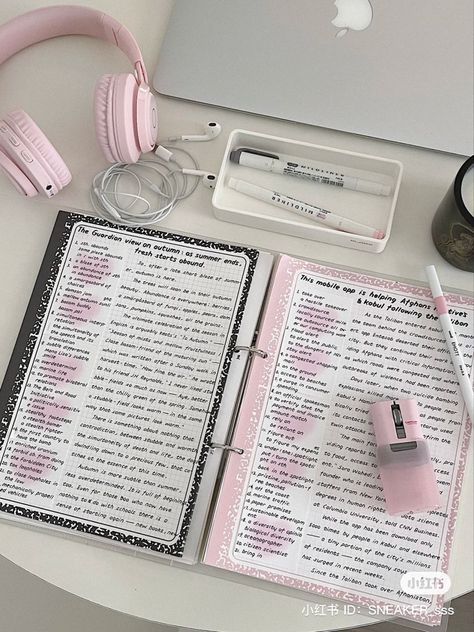I've Curated A Selection Of Four Japanese Terms, Each One A Combination Of Two Kanji Characters.
I've curated a selection of four Japanese terms, each one a combination of two kanji characters.




More Posts from Resources-blr and Others
CREATING A STUDY SCHEDULE/ROUTINE



PLANNING/SCHEDULING
LIST YOUR ACADEMIC STRENGTHS AND WEAKNESSES. This is so you can allocate time accordingly and avoid wasting any time.
PRIORITISE ANY SUBJECTS. These may be subjects that will help you in your future career or just a subject you especially want a good grade in. Anything for these subjects then becomes the most important on your to-do list.
DIVIDE TIME EACH DAY. Not all days you are going to be able to sit down at your desk at the same time. Instead, according to your energy levels and planned activities, divide your time.
E.g I have cheerleading after school and I'm going to be so tired, so I’ll do my studying in the morning instead.
ESTABLISH BREAKS. Depending on how long you can study for, place a suitable break in between. This helps make studying more productive, but only if your breaks are.
CREATING
USE YOUR TIMETABLE. On days you don’t have a specific subject, dedicate more time to that one.
CONSIDER YOUR LEARNING STYLE. This helps to be a bit more specific when creating it, instead of winging it and just doing anything. Having a consistent way of studying helps us learn better.
E.g I’m a visual learner, so I’ll watch animations. I'm an auditory learner so I’ll watch a video of someone explaining it.
KNOW WHAT YOU WILL DO DURING STUDYING. Do not just wing studying, it’s unproductive and you’re more likely to waste time instead of using it.
Before you start studying, write a to-do list of everything you need to do during that session and how you will do it. Less time time-consuming and allows you to use time productively.
SAMPLE – this is Lanny’s daily study routine without any upcoming tests, as an early bird, kinesthetic learner and needs breaks to think with clarity.
Morning
Review my flashcards in preparation for any test.
Write/note any flashcards I'm struggling with.
Afterschool
Check seqta/school website to access my courses, in which I’ll write down which subjects I had.
Do a few quick blurts on paper of everything I learned in those subjects with prior reading. I only do this for HASS, math and science + any electives that require it. (blurting method)
Then I recheck my blurts, add in anything that I’ve missed and correct with a different coloured pen.
After, I push those papers aside but I do not discard them. I’ll then complete my online science homework + class workbook. If I happen not to understand anything I’ll watch a video on it and then complete some questions on that.
I’ll take a break around now because, on an estimate, it has been around 20-40 minutes since I started depending on how my science homework is. I usually eat something and then get back to it.
Math is next. I’ll complete any math homework, then I’ll practice doing math questions on my own. What I like to do is watch a math video, pause the question without the answer then watch to see if I got it. Effective because they explain it and I can see where I went wrong without analysing my working out which is rather time-consuming.
I take another break. Math stuff usually takes around 20-30 minutes.
I then do HASS, which is the easiest. I usually read an article or watch a video on hass then apply that knowledge by answering questions OR doing assigned chapter work.
I do not study English after school, but I usually read an assigned passage/book and then try to apply any techniques/knowledge by taking that paragraph apart and analysing it. Sometimes, I write my paragraphs using any taught techniques and then mark them.
Then, I redo my blurtings again but without prior reading then recheck and correct. Then I am finished for the afternoon!!
Evening
Review flashcards then watch a video/read an article on what I was struggling with in the morning but I do not do anything to consolidate this knowledge.
That is all, please feel free to ask me about any questions about studying as I don't really post much about it, I'll love to help out any fellow students!
YouTube Channels for Kids by JLPT Levels
(。•̀ᴗ-)✧ resources

こんにちは, Japanese learners! Learning a language is an exciting adventure, isn't it? To add a spark of joy to your Japanese learning journey, here's a collection of YouTube channels tailored for kids. Organized by JLPT levels, these channels offer a blend of education and entertainment for learners at different stages. Keep in mind, though, that JLPT levels aren't an exact science like math – language learning can be subjective in terms of difficulty. However, these resources provide a fantastic starting point and a fun way to explore the world of Japanese language and culture. Let's hop into this delightful world of animated learning and playful discoveries!
Friendly reminder to adjust your way of learning in order to make the most of what you're studying to reach the goal you truly want! read my post about it (ᵔ◡ᵔ)
꒰ა ˚₊ ✧・┈・╴N 5 ╴・┈・𐑺 ‧₊˚໒꒱
— Curious George (N5 level)
https://youtube.com/@CuriousGeorgeJP?feature=shared
— Japanese folk tales/anime series (Japanese audio/Japanese subtitles) from BomBom Academy (N5 level)

— Peppa Pig (N5-4 level)

— Anpanman (N5-4 level)

— NHK education (N5-4 level)

꒰ა ˚₊ ✧・┈・╴N4 ╴・┈・𐑺 ‧₊˚໒꒱
— Cinnamon Roll, Sanrio (N4 level)

— [Anime] Atashin'chi (N4-3 level)
![[Anime] Atashin'chi Official Channel](https://64.media.tumblr.com/88a4afc68ea2f69370d128d59f8153ff/379ef9c6a7ac19f7-d2/s1280x1920/075a83bfa83afc89b7273545cb35e167c47fa5ee.jpg)
꒰ა ˚₊ ✧・┈・╴N3 ╴・┈・𐑺 ‧₊˚໒꒱
— Sesame Street Japan (N3 level)

— Chibi Maruko Chan (N3-2 level)

꒰ა ˚₊ ✧・┈・╴N2 ╴・┈・𐑺 ‧₊˚໒꒱
— Precure (N2 level)

またね~@inkichan
꒰ა ˚₊ ✧・┈・╴﹕꒰ ᐢ。- ༝ -。ᐢ ꒱﹕╴・┈・𐑺 ‧₊˚໒꒱
It's so funny to me that people think of Math/Mathematicians as being hyper-logical and rational. Like, have you seen some of the wild things hiding in the Math?
Did you know there are non-computable numbers?? (https://en.wikipedia.org/wiki/Chaitin%27s_constant)
Did you know that there are things that are true, but we can't prove them??? (https://en.wikipedia.org/wiki/G%C3%B6del%27s_incompleteness_theorems)
Did you know that we can prove that something exists, and yet never actually figure out what that thing is?? (https://mathworld.wolfram.com/NonconstructiveProof.html)
Math is crazy. Math is wild. Math hardly makes sense, and when you think you understand the weirdest parts of it, everyone who hears you explain it to thinks you're a gibbering lunatic.
"In mathematics you don’t understand things. You just get used to them." - von Neumann
(please share more unhinged math with me, i want to see more scary math)
“In that predicament, if I’m lucky, I’ll remember the observation, usually attributed to Joan Baez, that “action is the antidote to despair.” People tend to quote this in the context of political or environmental activism, but it applies to everything else, too: an overfilled inbox, a cluttered garage, an intimidating creative project or overdue tax return. If you can get yourself over the gap between knowing what you need to do and taking an action, things can only get better from there. Which means that at least the nature of the immediate challenge is clear: not to “become more productive” or “get motivated” or “make a plan for the month” or something like that, but just to do one thing to address whatever situation you’re in. […] If you can approach your daily life in this way for a while – as a sequence of momentary, self-contained, eminently doable actions, rather than as an arduous matter of chipping away at enormous challenges – you might notice something profound, which is that, in fact, this is all you ever need to do. You can make your way through life exclusively in this manner. (As E. L. Doctorow said of writing, it’s “like driving at night in the fog. You can only see as far as your headlights, but you can make the whole trip that way.”) And not just that: actually, it’s all you ever could do. There is no achievement, in the history of human civilisation, that has ever been accomplished by any means other than as a sequence of doable actions. In the end, it isn’t really a question of “breaking big projects down into small chunks.” It’s more a matter of seeing that “big projects” are nothing but psychological constructs, quasi-illusory entities summoned into existence by taking a particular view of what our lives really consist of – which is moments, and the actions that unfold in them. After all, in any given moment, we’re never actually “working on a big project” or “addressing a major challenge” or anything similar. We’re always just taking an action. And then another. And another.”
— Oliver Burkeman, How to get out of a rut
Want to learn something new in 2022??
Absolute beginner adult ballet series (fabulous beginning teacher)
40 piano lessons for beginners (some of the best explanations for piano I’ve ever seen)
Excellent basic crochet video series
Basic knitting (probably the best how to knit video out there)
Pre-Free Figure Skate Levels A-D guides and practice activities (each video builds up with exercises to the actual moves!)
How to draw character faces video (very funny, surprisingly instructive?)
Another drawing character faces video
Literally my favorite art pose hack
Tutorial of how to make a whole ass Stardew Valley esque farming game in Gamemaker Studios 2??
Introduction to flying small aircrafts
French/Dutch/Fishtail braiding
Playing the guitar for beginners (well paced and excellent instructor)
Playing the violin for beginners (really good practical tips mixed in)
Color theory in digital art (not of the children’s hospital variety)
Retake classes you hated but now there’s zero stakes:
Calculus 1 (full semester class)
Learn basic statistics (free textbook)
Introduction to college physics (free textbook)
Introduction to accounting (free textbook)
Learn a language:
Ancient Greek
Latin
Spanish
German
Japanese (grammar guide) (for dummies)
French
Russian (pretty good cyrillic guide!)
Coding resource!


exercism.org
A free website where you get specific problems to methodically learn small concepts of a programming language. Do 10 minutes to 1 hour every day, and then you will keep practicing every day, and you will be able to use the skills you learn in your real projects. They walk you through the problem all the way, and it's a super good way to learn!
-
 resources-blr reblogged this · 3 months ago
resources-blr reblogged this · 3 months ago -
 shiny-cupcake liked this · 3 months ago
shiny-cupcake liked this · 3 months ago -
 resmundus liked this · 4 months ago
resmundus liked this · 4 months ago -
 japanese-lol liked this · 4 months ago
japanese-lol liked this · 4 months ago -
 sharpandpointies reblogged this · 4 months ago
sharpandpointies reblogged this · 4 months ago -
 sharpandpointies liked this · 4 months ago
sharpandpointies liked this · 4 months ago -
 xzinik reblogged this · 4 months ago
xzinik reblogged this · 4 months ago -
 xzinik liked this · 4 months ago
xzinik liked this · 4 months ago -
 warau-okami reblogged this · 4 months ago
warau-okami reblogged this · 4 months ago -
 positivemotivation liked this · 4 months ago
positivemotivation liked this · 4 months ago -
 tewaimoana liked this · 4 months ago
tewaimoana liked this · 4 months ago -
 chimera-kraken liked this · 4 months ago
chimera-kraken liked this · 4 months ago -
 hamusuke-japanese-learning reblogged this · 4 months ago
hamusuke-japanese-learning reblogged this · 4 months ago









![How to Read a Paper
S. Keshav
David R. Cheriton School of Computer Science, University of Waterloo
Waterloo, ON, Canada
keshav@uwaterloo.ca
ABSTRACT
Researchers spend a great deal of time reading research pa-
pers. However, this skill is rarely taught, leading to much
wasted effort. This article outlines a practical and efficient
three-pass method for reading research papers. I also de-
scribe how to use this method to do a literature survey.
Categories and Subject Descriptors: A.1 [Introductory
and Survey]
General Terms: Documentation.
Keywords: Paper, Reading, Hints.
1. INTRODUCTION
Researchers must read papers for several reasons: to re-
view them for a conference or a class, to keep current in
their field, or for a literature survey of a new field. A typi-
cal researcher will likely spend hundreds of hours every year
reading papers.
Learning to efficiently read a paper is a critical but rarely
taught skill. Beginning graduate students, therefore, must
learn on their own using trial and error. Students waste
much effort in the process and are frequently driven to frus-
tration.
For many years I have used a simple approach to efficiently
read papers. This paper describes the ‘three-pass’ approach
and its use in doing a literature survey.
2. THE THREE-PASS APPROACH
The key idea is that you should read the paper in up to
three passes, instead of starting at the beginning and plow-
ing your way to the end. Each pass accomplishes specific
goals and builds upon the previous pass: The f irst pass
gives you a general idea about the paper. The second pass
lets you grasp the paper’s content, but not its details. The
third pass helps you understand the paper in depth.
2.1 The first pass
The first pass is a quick scan to get a bird’s-eye view of
the paper. You can also decide whether you need to do any
more passes. This pass should take about five to ten minutes
and consists of the following steps:
1. Carefully read the title, abstract, and introduction
2. Read the section and sub-section headings, but ignore
everything else
3. Read the conclusions
4. Glance over the references, mentally ticking off the
ones you’ve already read
At the end of the first pass, you should be able to answer
the five Cs:
1. Category: What type of paper is this? A measure-
ment paper? An analysis of an existing system? A
description of a research prototype?
2. Context: Which other papers is it related to? Which
theoretical bases were used to analyze the problem?
3. Correctness: Do the assumptions appear to be valid?
4. Contributions: What are the paper’s main contribu-
tions?
5. Clarity: Is the paper well written?
Using this information, you may choose not to read fur-
ther. This could be because the paper doesn’t interest you,
or you don’t know enough about the area to understand the
paper, or that the authors make invalid assumptions. The
first pass is adequate for papers that aren’t in your research
area, but may someday prove relevant.
Incidentally, when you write a paper, you can expect most
reviewers (and readers) to make only one pass over it. Take
care to choose coherent section and sub-section titles and
to write concise and comprehensive abstracts. If a reviewer
cannot understand the gist after one pass, the paper will
likely be rejected; if a reader cannot understand the high-
lights of the paper after five minutes, the paper will likely
never be read.
2.2 The second pass
In the second pass, read the paper with greater care, but
ignore details such as proofs. It helps to jot down the key
points, or to make comments in the margins, as you read.
1. Look carefully at the figures, diagrams and other illus-
trations in the paper. Pay special attention to graphs.
Are the axes properly labeled? Are results shown with
error bars, so that conclusions are statistically sig-
nificant? Common mistakes like these will separate
rushed, shoddy work from the truly excellent.
2. Remember to mark relevant unread references for fur-
ther reading (this is a good way to learn more about
the background of the paper).](https://64.media.tumblr.com/d8a08d69100a750bc11a6a5d6c3033b3/9fd9993b8814fcbf-27/s500x750/43752e4075be8dd029c1e64a4d500a5404851ab2.jpg)

![(continued from previous image)
I’ve used this approach for the last 15 years to read con-
ference proceedings, write reviews, do background research,
and to quickly review papers before a discussion. This dis-
ciplined approach prevents me from drowning in the details
before getting a bird’s-eye-view. It allows me to estimate the
amount of time required to review a set of papers. More-
over, I can adjust the depth of paper evaluation depending
on my needs and how much time I have.
5. RELATED WORK
If you are reading a paper to do a review, you should also
read Timothy Roscoe’s paper on “Writing reviews for sys-
tems conferences” [2]. If you’re planning to write a technical
paper, you should refer both to Henning Schulzrinne’s com-
prehensive web site [3] and George Whitesides’s excellent
overview of the process [4]. Finally, Simon Peyton Jones
has a website that covers the entire spectrum of research
skills [1].
6. A REQUEST
I would like to make this a living document, updating it
as I receive comments. Please take a moment to email me
any comments or suggestions for improvement. You can also
add comments at CCRo, the online edition of CCR [5].
7. ACKNOWLEDGMENTS
The first version of this document was drafted by my stu-
dents: Hossein Falaki, Earl Oliver, and Sumair Ur Rahman.
My thanks to them. I also benefited from Christophe Diot’s
perceptive comments and Nicole Keshav’s eagle-eyed copy-
editing.
This work was supported by grants from the National
Science and Engineering Council of Canada, the Canada
Research Chair Program, Nortel Networks, Microsoft, Intel
Corporation, and Sprint Corporation.
8. REFERENCES
[1] S. Peyton Jones, “Research Skills,”
http://research.microsoft.com/ simonpj/Papers/giving-
a-talk/giving-a-talk.htm.
[2] T. Roscoe, “Writing Reviews for Systems
Conferences,”
http://people.inf.ethz.ch/troscoe/pubs/review-
writing.pdf.
[3] H. Schulzrinne, “Writing Technical Articles,”
http://www.cs.columbia.edu/ hgs/etc/writing-
style.html.
(text from current image)
[4] G.M. Whitesides, “Whitesides’ Group: Writing a
Paper,”
http://www.che.iitm.ac.in/misc/dd/writepaper.pdf.
[5] ACM SIGCOMM Computer Communication Review
Online, http://www.sigcomm.org/ccr/drupal/.](https://64.media.tumblr.com/e2a7d1a366afdb04cf158fa3d336e7c9/9fd9993b8814fcbf-0a/s500x750/5e2c641699d80a28fe51f3431277d450c66c89a7.jpg)






